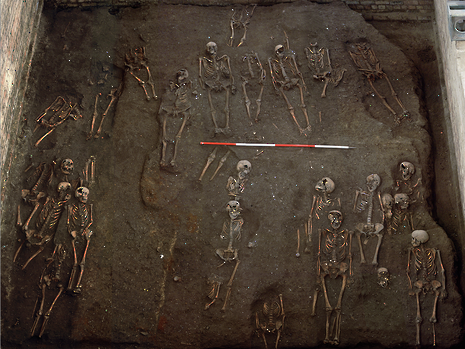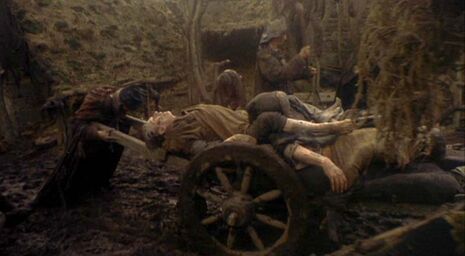Grave revelations
Dan Hepworth speaks to Craig Cessford, the leader of the Archaeological dig that led to the recent finding under St John’s Divinity School

My mum thought it was a joke when the news broke on April 1st. If this was the case, I couldn’t quite understand what the joke was – perhaps it was the fact of St. John's allowing their grass to be dug up?
But the discovery of the remains of over one thousand individuals in St. John's College between 2010 and 2012 has finally been made public, in line with the publication of the paper in Archaeological Journal 2015. The work was carried out by members of the university as part of the Cambridge Archaeological Unit.
Alas the grass was never disturbed, because the excavations at John’s were in fact underneath the Old Divinity School, and provided evidence for the historically chronicled ‘hospital for the poor’ residing underneath.
The dig was an opportunist venture, taking advantage of the refurbishment of the Victorian building, and perhaps excavating a section of land which would otherwise never have been explored.
“The college wanted to refurbish the building and this included extending the basements,” said Craig Cessford, the leader of the excavation from the McDonald Institute. “We were in effect digging out the deposits that they wanted removed for their building works on their behalf, just doing it archaeologically rather than simply taking it out with a machine.”
Four hundred complete skeletons, and bones from over one thousand individuals – many of whom were scholars at the university – were found buried in one of Britain’s largest medieval graveyard finds to date. The graveyard formed part of a hospital – the Hospital of St. John the Evangelist, which gave the college its name.
It is thought that the hospital, whose graveyard operated from the 13th to the 15th century, provided a burial service for the poorest Cambridge inhabitants, those who could not afford coffins to be buried in. Many of the bodies found during the dig were without shrouds.
“We knew from previous excavations nearby that there was likely to be surviving archaeology and from documentary sources that there was likely to be a hospital cemetery, although we had no idea exactly where and how extensive it would be"

This fact meant that permission was needed to excavate the site because “additionally in this case it was covered by rules for disturbing human remains”, while ordinarily their excavations are covered by the planning process for building work.
In fact, it was found those buried there was a well-kept, respected cemetery. The site was found to have gravel walkways, water wells and remains of plants laid on graves, suggesting the graveyard was regularly visited by relatives of the deceased.
The sheer number of bodies had fuelled rumours it was linked to the Black Death, but no such evidence from the time linking the finds to the plague were noted. In later centuries, plague victims in Cambridge were buried on local grazing land such as Midsummer Common, and it is likely that the same locations were used in the medieval period as well.
Cessford emphasised the significance of the find stating, “The 400 burials we excavated are one of the largest samples from a medieval British hospital cemetery which allows us to look at a good chunk of a population.”
All of the information from the dig adds to an already vast history of one of the university’s most famous colleges, but it is only now that photographs of the event are being shown, in time with the publication of the team’s work.
However, this is not the first college to have excavations carried out within the grounds. Newnham excavations in 2010 uncovered the site of a roman village situated in the gardens of the college.
 News / Clare Hall spent over £500k opposing busway 24 December 2025
News / Clare Hall spent over £500k opposing busway 24 December 2025 Comment / The ‘class’ of Cambridge24 December 2025
Comment / The ‘class’ of Cambridge24 December 2025 News / Caius mourns its tree-mendous loss23 December 2025
News / Caius mourns its tree-mendous loss23 December 2025 News / Girton JCR publishes open letter expressing solidarity with Palestine25 December 2025
News / Girton JCR publishes open letter expressing solidarity with Palestine25 December 2025 Comment / Yes, I’m brown – but I have more important things to say22 December 2025
Comment / Yes, I’m brown – but I have more important things to say22 December 2025









